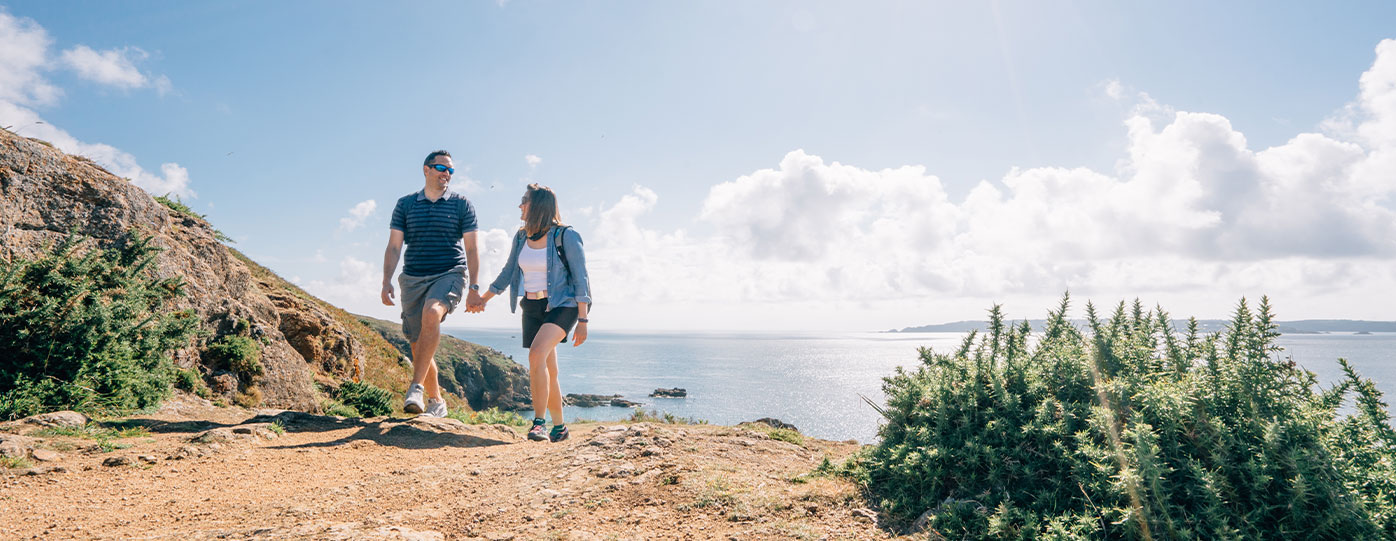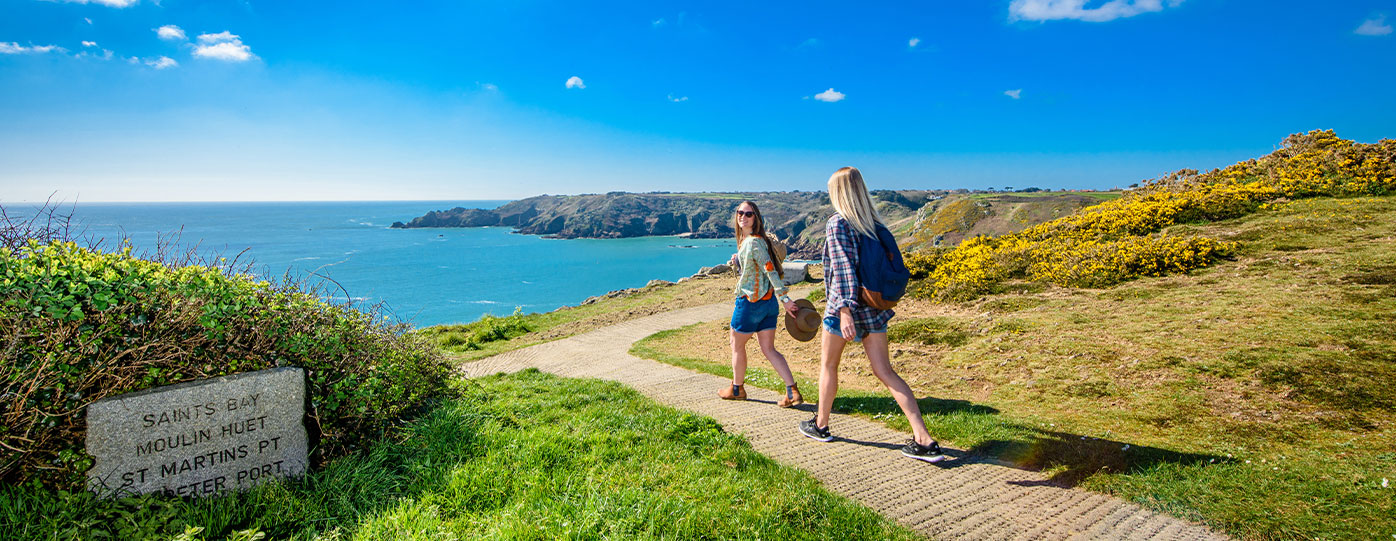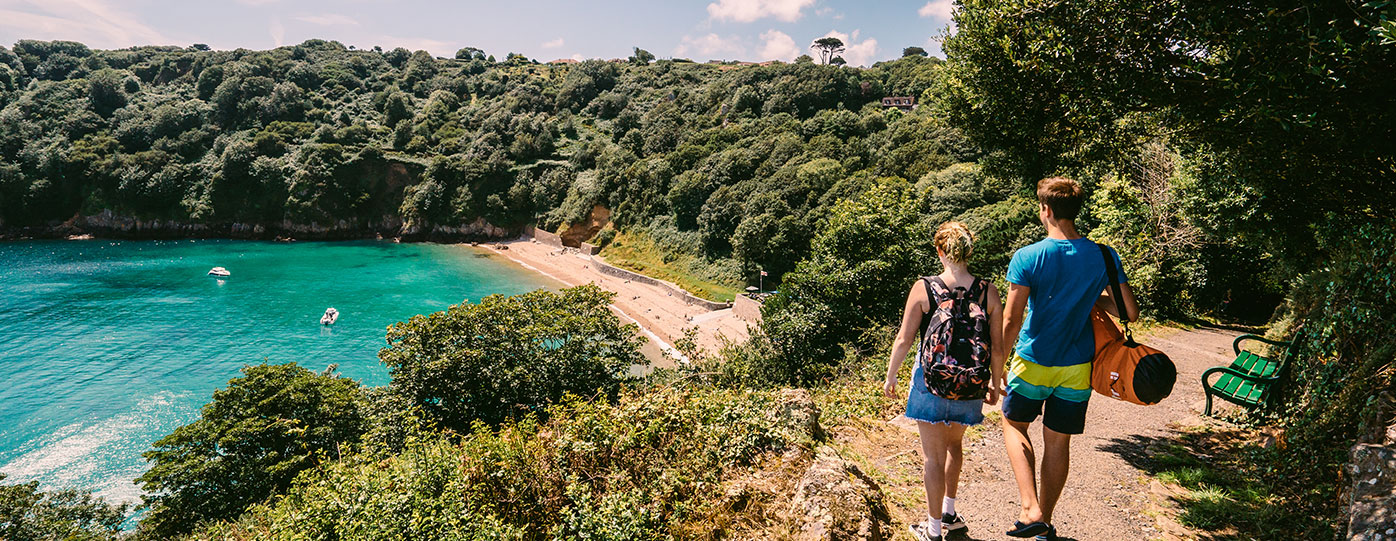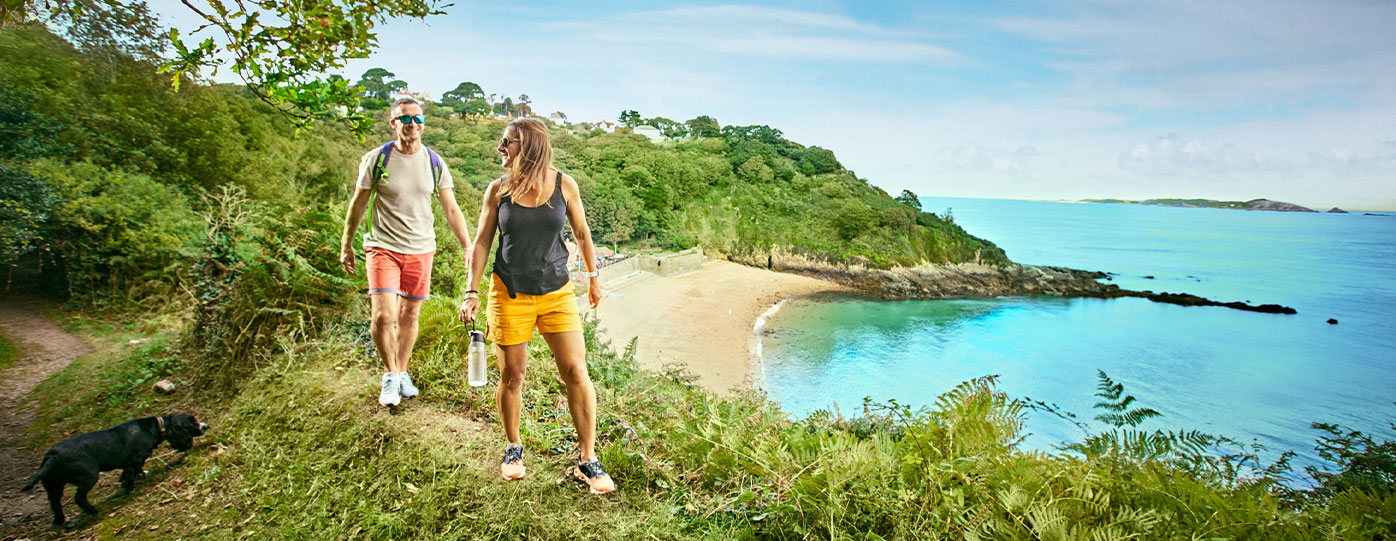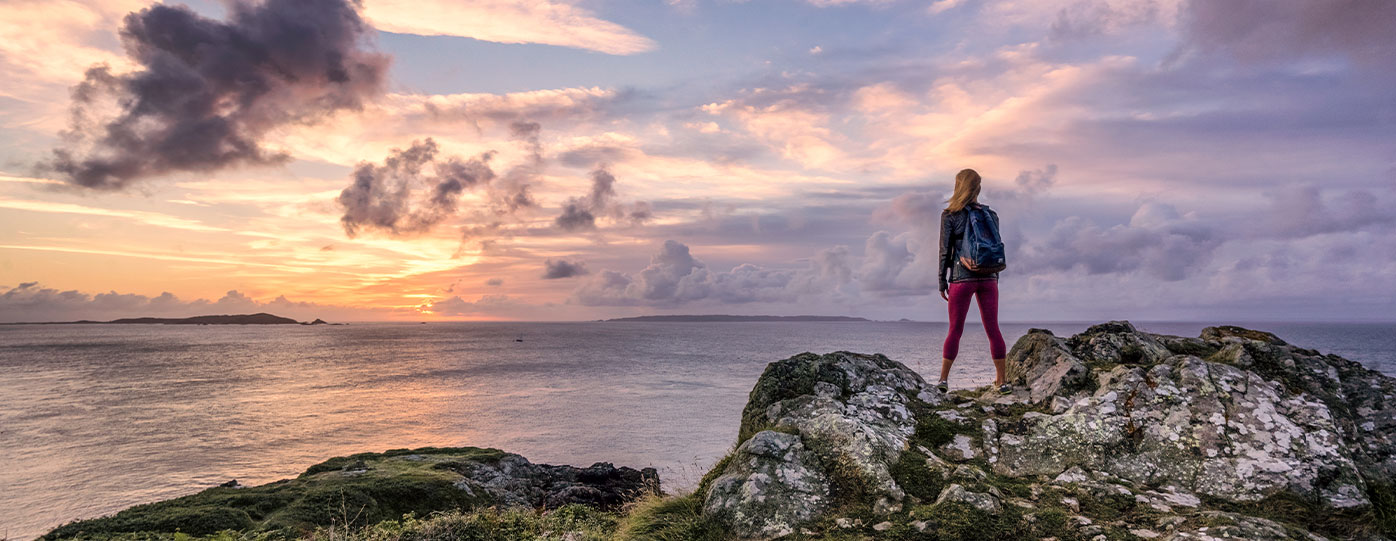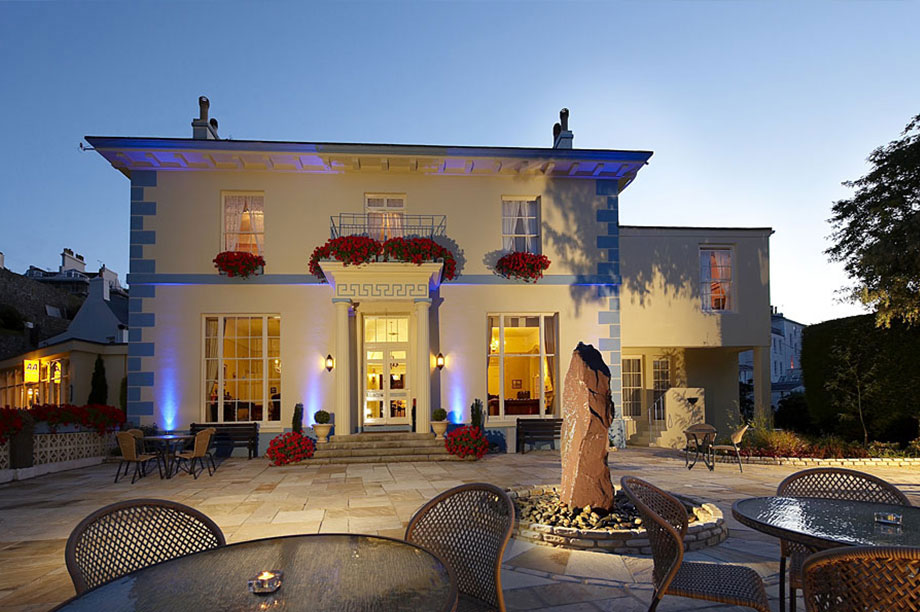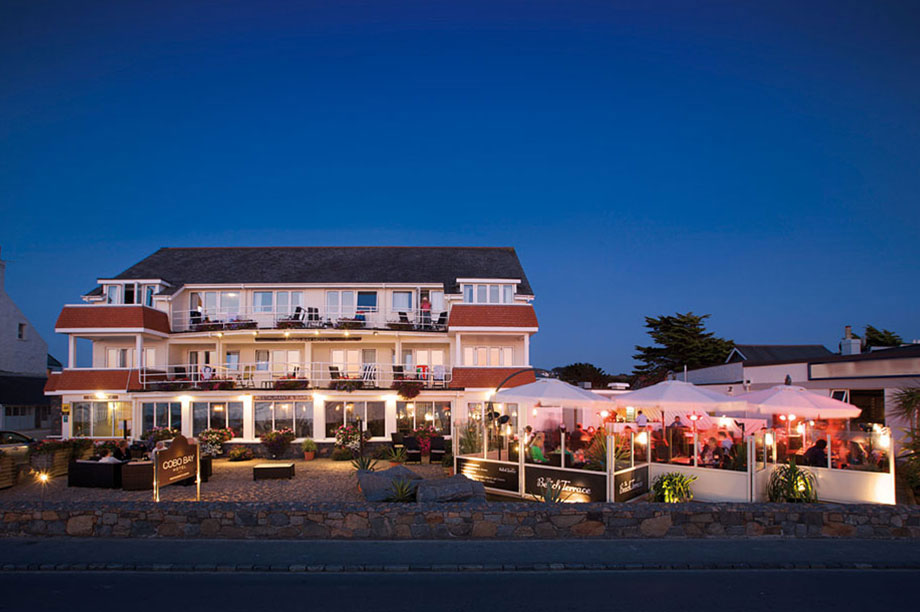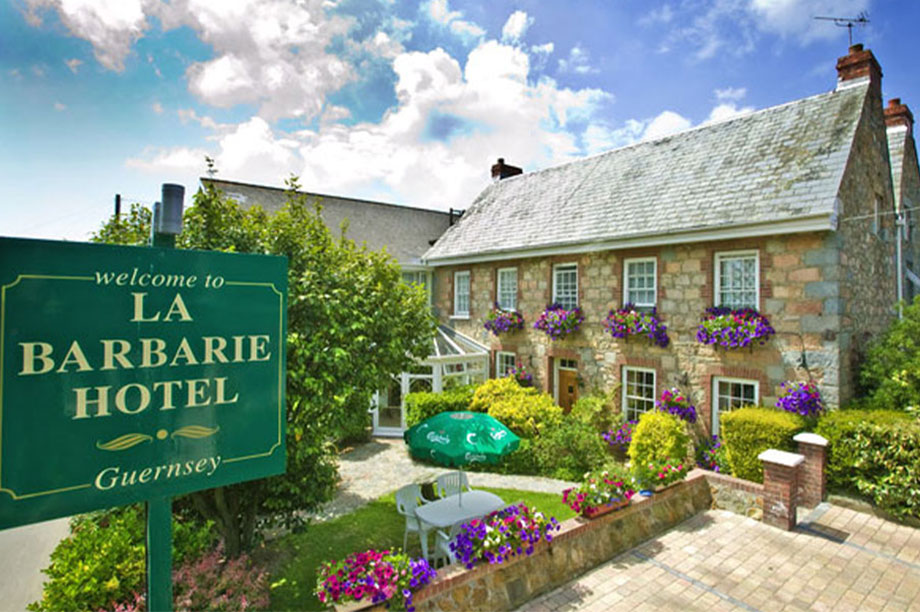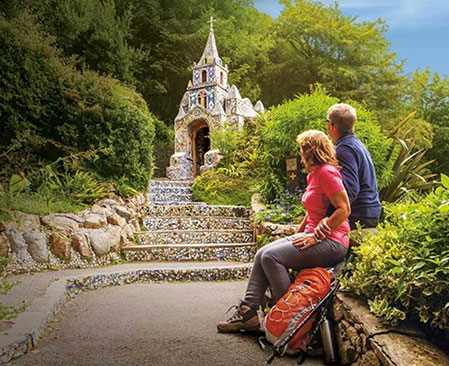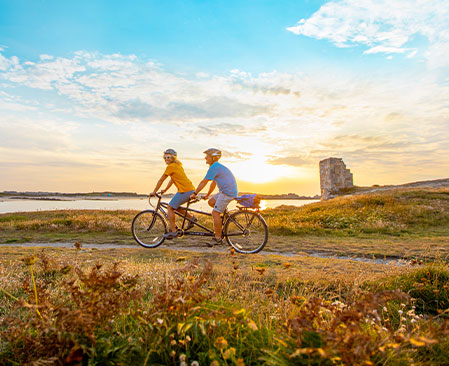Check Availability
Guernsey Walks
About Walking Routes in Guernsey
Available to enjoy at any time of year, and always different as the seasons change, Guernsey’s walking routes are made even more engaging with audio guides that you can download from the Visit Guernsey website that showcase Guernsey at its best. The audio guides give a full audio transcript and interactive map that highlights all the points of interest along the way.
From rambling over the island's cliffpaths to exploring the charming streets of St. Peter Port, Guernsey walking has so much to offer in its small yet diverse 25 square miles.
These suggested routes are designed with all walkers in mind. Whether you have years of hiking experience or would prefer a simple stroll around the lanes, there's something for everyone. You'll find each journey punctuated with some of the island's finest restaurants, cafes and beach kiosks, offering a quick snack or full relaxing meal to give you a real taste of Guernsey.
Should you prefer a fully guided walk you can join a group led by an accredited Walking Guide and more details can be found with at Guernsey Guided Tours.
Seafront, Bombings and Historic Gardens
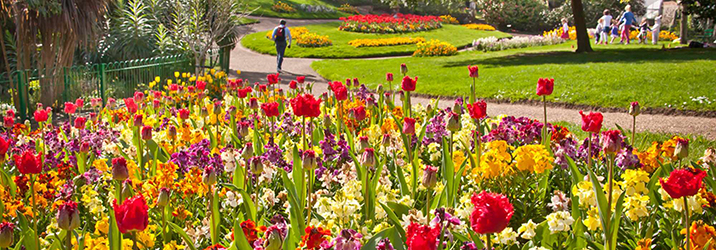
St Peter Port is said to have one of the prettiest harbours in Europe and is where you begin this walk. The Second World War had a huge impact on the island and this route will take you past the site of a 1940 bombing that claimed the lives of 33 islanders. Two days later, the island would start a five-year long German occupation.
Download the Seafront, bombings and historic gardens audio guide and route.
Forts, Cannons & Lookout Towers
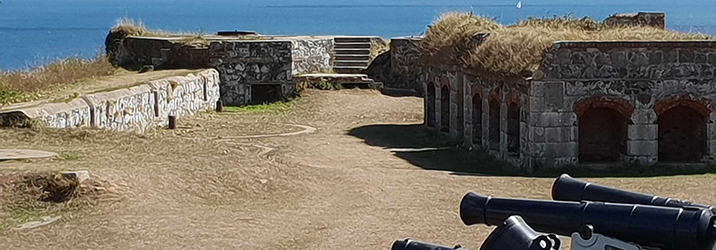
As you leave the town of St Peter Port behind, a whole new set of discoveries lay ahead. The area just above the town was once a fort and also a base for the occupying forces during the Second World War. Beyond are the Bluebell Woods which turn into a stunning carpet of blue in the month of April, an ideal spot to take a picnic. Fermain Bay itself was once home to a quaint ferry service which ran here from the town and it is in this area we come across one of the 15 loop-holed towers built in around 1778 to defend the island against a potential invasion by Napoleon and his troops. There are plenty of places to eat in the area, either at Fermain itself or further up the hill that slopes upwards from the bay.
Download the Forts, Cannons & Lookout Towers audio guide and route.
Island Views, Sweeping Headlands & Rocky Outcrops
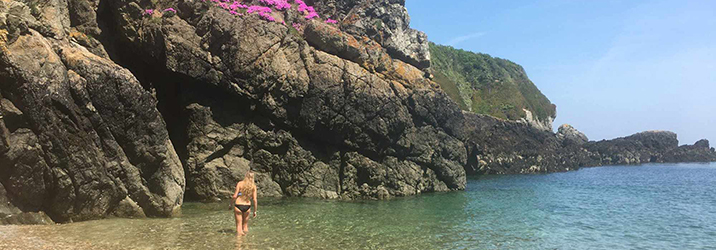
This section of the walk leads you to the south-east corner of our island towards one of our most outstanding natural features, the Pea Stacks, a line of large rocks just off the coast. One of Guernsey's significant monuments, the Doyle Column, can be found en route standing in an area that offers spectacular views overlooking our neighbouring islands and the Little Russell.
Download the Island Views, Sweeping Headlands & Rocky Outcrops audio guide and route.
Fishing Harbours, Panoramic Views & Wartime Tales
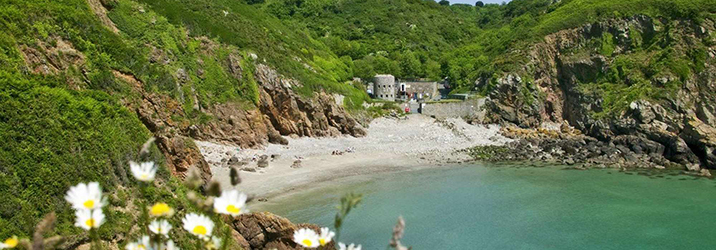
The views from this section of coastline are truly spectacular, with a panoramic outlook across Moulin Huet, Jerbourg headland and even France on a clear day. These cliffs are composed of some of the oldest rock in Europe and play host in springtime to a myriad of wildflowers. Because of their isolation, the beaches here were used during the Second World War by British spies to get onto the island unseen and gain useful information about the enemy invaders.
Download the Fishing Harbours, Panoramic Views & Wartime Tales audio guide and route.
Occupation Reminders & Folklore Legend

This walk leads to the south-west corner of the Island. German fortifications are strung along this particular section of cliffs, two such being L'Angle, a direction-finding tower, and the imposing Batterie Dollmann, a command post.
Download the Occupation Reminders & Folklore Legend audio guide and route.
Fairies, Forts & Deadly Shipwrecks
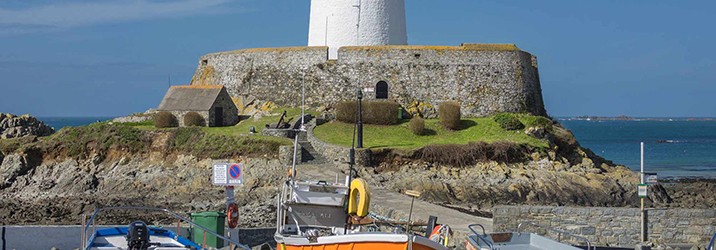
There is so much to see on this walk from ancient monuments, to a shipwreck museum housed in a Martello Tower, vast sandy beaches and an island cut off by the tide.
Download the Fairies, Forts & Deadly Shipwrecks audio guide and route.
Fishing Ports Prehistoric Tombs & sweeping Common Land
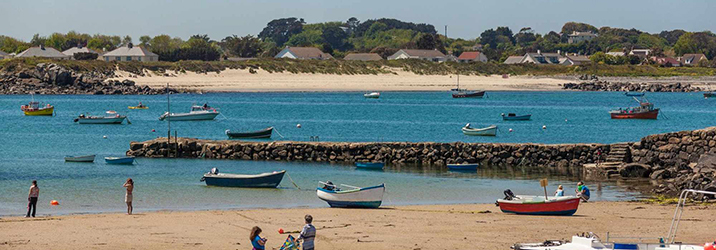
This wild and beautiful part of Guernsey's coastline is made up largely of common land and is a major recreational area with a golf course, edged with long sandy beaches.
Download the Fishing Ports Prehistoric Tombs & sweeping Common Land audio guide and route.
Beautiful Bays, Marinas & Castles
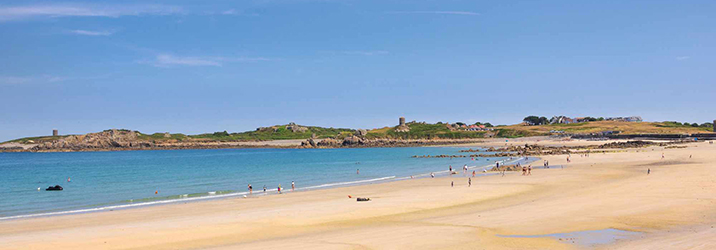
The North coast offers the walker a gentle terrain with a long beautiful shoreline. The picturesque Beaucette Marina, once a quarry, is now a quiet haven. Pause here to eat in the the Gold Award Restaurant at Beaucette which overlooks the colourful yachts moored in the marina. A short detour inland brings you to one of the most fascinating prehistoric sites in the Island. Back on the coast, you come to a tiny harbour which overlooks our neighbouring islands and the remains of a most impressive castle.
Download the Beautiful Bays, Marinas & Castles audio guide and route.
Castles & Towers Lead Back to the Capital
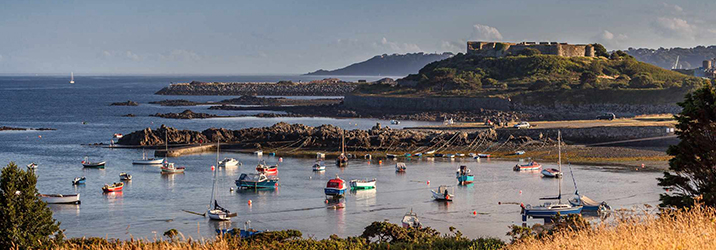
This section of Guernsey's coastline was once home to the island's shipbuilding industry and is now the hub for our power supplies and light industry. The area known as The Bridge is now popular for shopping but, as its name alludes to, was once the main crossing point when Guernsey was effectively two islands. The harbour itself was once a thriving port in the late 1800s when as many as 30 ships and 300 sailors came into town. Nowadays, however, local boats bob in the calm waters of a marina built in 2005.
Download the Castles & Towers Lead Back to the Capital audio guide and route.
Islets, Dolmens & Pretty Harbours
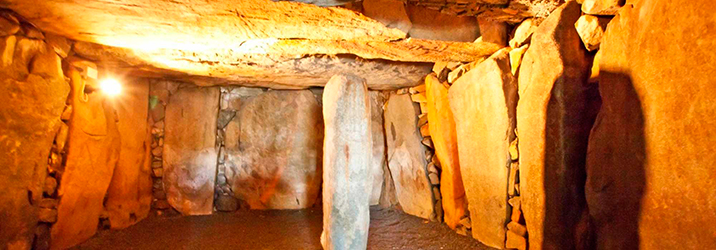
This walk loops inland from , taking in some lovely sea views and a visit to the Dehus Dolmen, one of the most fascinating prehistoric sites in the Island. This is free to enter and features 'Le Guardian du Tombeau', a remarkable carving highlighted by a beam of light that brings it to life.
Download the Islets, Dolmens & Pretty Harbours audio guide and route.
A Rural Stroll Reveals a Unique Chapel
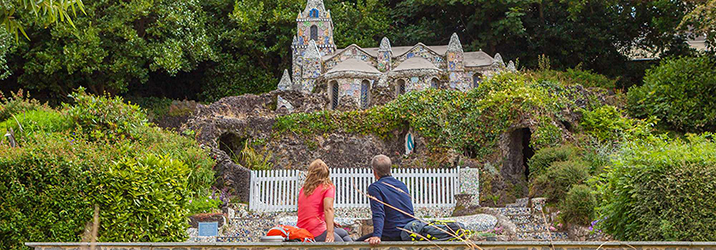
This lovely inland walk takes you through St Andrew's, the only parish to have no coastline. It has beautiful scenery with picturesque valleys, fields and woodland. You will come across a number of traditional old buildings in the area including a former water mill that was built in the early 1700s, although there has been one on the site since the 1300s.
Download the A Rural Stroll Reveals a Unique Chapel audio guide and route.
Occupation Memories & Smugglers Tales
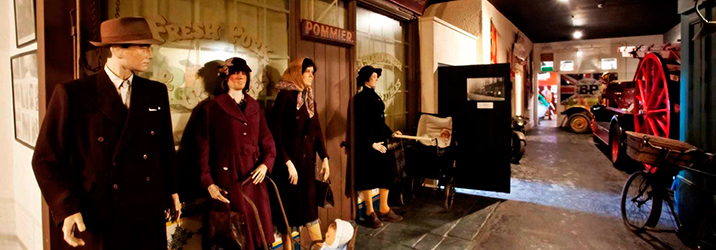
This country walk takes you down narrow leafy lanes and past beautiful granite farmhouses. En route you will pass the parish church which dates back to the 13th century, a museum chronicling the German occupation and a pretty hamlet which was reputedly the haunt of smugglers.
Download the Occupation Memories & Smugglers Tales audio guide and route.
Fascinating Architecture, Migrant Birds & Coastal Views - Alderney
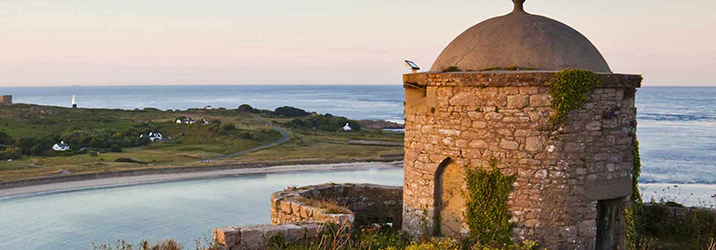
Alderney is the most northerly of the Channel Islands and closest to France. Small, friendly and relaxed, the island has its own unique identity and is a paradise for nature lovers with a combination of beautiful landscapes and abundant wildlife.
Download the Fascinating Architecture, Migrant Birds & Coastal Views audio guide and route.
Potato Peel Pie Occupation Walk in St Peter Port
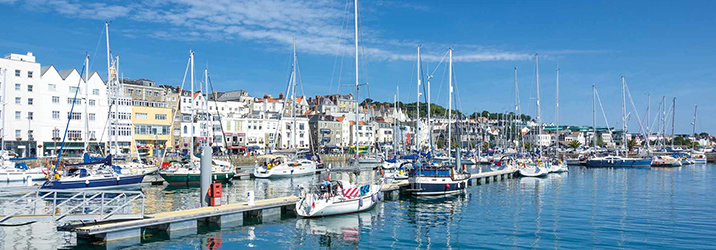
Walk in Juliet’s footsteps and explore the locations mentioned in the bestselling book “The Guernsey Literary and Potato Peel Pie Society” whilst learning about the Island’s occupation during the Second World War.
Download the Potato Peel Pie Occupation Walk in St Peter Port audio guide and route.
Dates
Enjoy the walks, cafes and restaurants all year!

